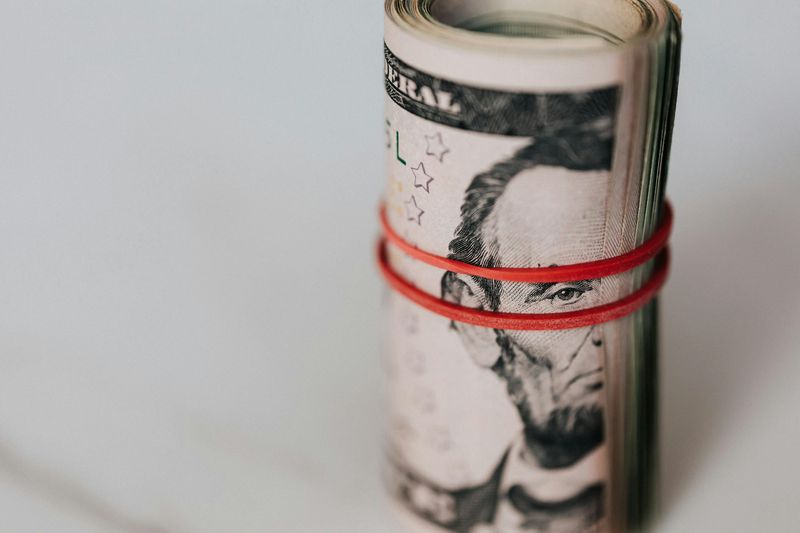Money saved is money earned, but finding ways to spend less isn’t always easy. Living below your means doesn’t require extreme sacrifices or complicated budgeting systems. With a few simple adjustments to your daily habits, you can watch your bank balance grow without feeling deprived. These practical strategies will help you build wealth while still enjoying life’s pleasures.
1. Automate Your Savings

The magic of automation removes willpower from the equation entirely. When money moves to savings before you see it, you adapt to living on what remains without feeling the pinch. Your future self will thank you!
Start small with just 5% of your income if you’re new to saving. Gradually increase to 10% or even 20% as you adjust your lifestyle. The best part? This method requires setup just once, then works silently in the background.
Many banks offer automatic transfers that align with your payday schedule. Some employers even split direct deposits between accounts, making saving completely effortless.
2. Track Every Dollar You Spend

Money tends to slip away when we aren’t looking. Taking just five minutes daily to record expenses creates a powerful habit that transforms your relationship with money. Most people are shocked to discover where their cash actually goes.
Free apps like Mint or simple spreadsheets make tracking painless. The awareness alone often reduces spending by 10-15% in the first month! You’ll spot patterns you never noticed before.
This habit works because it removes the mystery from your finances. Instead of wondering where your paycheck went, you’ll have clear data showing exactly which expenses are worth keeping and which can be trimmed.
3. Cook at Home More Often

Restaurant meals cost 3-5 times more than home-cooked versions of the same dishes. Even casual takeout adds up fast when it becomes a regular habit. Learning just five go-to recipes can revolutionize your food budget.
Meal prepping on weekends saves both money and precious weeknight time. Cooking becomes less of a chore when you’re not starting from scratch every evening. Plus, you control exactly what goes into your food.
The average American household spends over $3,000 annually dining out. Replacing just half those meals with home cooking could fund a vacation or boost your retirement savings substantially.
4. Cancel Unused Subscriptions

Small monthly charges create the perfect financial blind spot. At $9.99 here and $14.99 there, these seemingly tiny expenses compound into hundreds of dollars annually for services you barely use. When was the last time you watched that specialty streaming channel?
Apps like Truebill or Trim scan your accounts and identify recurring charges. Many people discover they’re paying for 3-4 subscriptions they completely forgot about! The average household wastes $348 yearly on unused services.
Consider the subscription rotation method: keep only 1-2 services active at once, then switch when you’ve watched everything that interests you. Your entertainment stays fresh while your wallet stays fuller.
5. Buy Generic When It Makes Sense

Brand loyalty costs a premium, especially when the generic version contains identical ingredients. Medications offer the most dramatic example – store-brand acetaminophen works exactly like Tylenol at a fraction of the cost.
Grocery staples like flour, sugar, and spices show almost no quality difference between generic and name brands. Many store brands are actually produced in the same factories as their expensive counterparts! The FDA holds all food and medications to identical safety standards regardless of branding.
Smart shoppers mix and match: choose generic for basics and splurge on name brands only when the quality difference truly matters to you. This balanced approach can trim 15-25% from your grocery bill.
6. Set “No-Spend” Days

Money habits form through repetition, and no-spend days create powerful mental shifts. Designating Tuesday and Thursday as days when no money leaves your accounts quickly reveals the difference between wants and needs.
Planning becomes essential – you’ll need gas in the car and food ready before your no-spend day begins. This preparation alone prevents countless impulse purchases! Many practitioners report feeling a surprising sense of freedom, not deprivation.
The challenge creates a game-like atmosphere that makes saving fun rather than punishing. Start with one day weekly, then gradually increase. You might discover you prefer the simplicity of days focused on enjoying what you already have rather than acquiring more.
7. Use the 48-Hour Rule for Impulse Buys

Retailers design stores and websites to trigger emotional buying decisions. The 48-hour rule creates a cooling-off period that lets logic reclaim control from impulse. Simply wait two days before purchasing anything non-essential.
Create a digital wish list or take photos of items that tempt you. Revisit after 48 hours and ask: “Do I still want this as much as I did before?” Surprisingly, about 70% of desired items lose their appeal during this waiting period.
For online shopping, fill your cart but close the browser before checkout. If you still remember the items two days later, they might be worth considering. This simple pause has saved countless shoppers from buyer’s remorse and unnecessary credit card debt.
8. Downsize Your Lifestyle (Not Your Happiness)

Americans typically spend 30-50% of income on housing, often chasing excess space we rarely use. Choosing a home 20% smaller than what you qualify for creates a financial buffer that reduces stress far more than extra square footage adds comfort.
Vehicles represent another opportunity for painless downsizing. The average car payment now exceeds $500 monthly! Selecting reliable transportation rather than status symbols frees substantial cash for experiences that create lasting memories.
The joy of material possessions typically fades within weeks, while financial security provides lasting peace of mind. The question becomes: would you rather impress strangers with your belongings or impress yourself with your growing bank balance?
9. Buy Used or Shop Thrift

Nearly-new items often sell for 50-75% less than their retail price. From furniture to fashion, the initial depreciation happens the moment something leaves the store. Why not let someone else absorb that cost?
Modern thrifting has evolved beyond dusty charity shops. Online marketplaces like Facebook Marketplace and Poshmark make finding specific items easy. Many secondhand goods still have tags attached or remain in original packaging!
Beyond savings, thrifting reduces environmental impact and often yields unique finds that stand out from mass-produced retail. Books, kitchen equipment, and children’s items offer especially good value – kids outgrow things long before they wear out. The stigma around secondhand shopping has largely disappeared, replaced by pride in smart, sustainable choices.
10. Avoid Lifestyle Creep

Raises and bonuses offer golden opportunities that most people miss. When income increases, immediately divert at least half the additional amount to savings before lifestyle expansion absorbs it all. You’ll never miss what you haven’t started spending!
Your future financial security depends more on saving rate than on income level. Millionaires are made through consistent habits, not massive salaries. Someone earning $50,000 who saves 20% builds wealth faster than someone earning $100,000 who saves 5%.
Maintaining modest spending while income grows creates an increasingly comfortable gap between earnings and expenses. This buffer absorbs emergencies without stress and eventually generates passive income that exceeds your expenses – the definition of financial freedom.
11. Unfollow Temptation

Your attention is valuable currency that marketers work tirelessly to capture. Each sponsored post and targeted email aims to create dissatisfaction with what you already own. Digital minimalism creates space for contentment to grow.
Unsubscribing from retail emails alone can prevent dozens of impulsive purchases monthly. Replace shopping-focused social media with accounts that celebrate creativity, nature, or personal development instead. The average American sees 4,000-10,000 advertisements daily!
Try a 30-day detox from shopping-related content and notice how your desires shift. Many people report feeling lighter and more appreciative of what they already possess. When you stop comparing your belongings to carefully curated images, you’ll find your current possessions suddenly seem more than adequate.
12. Plan Your Purchases

Retailers rely on urgency and impulse to maximize profits. Strategic shoppers flip this dynamic by researching major purchases weeks or months in advance. Patience becomes your superpower in a world designed for immediate gratification.
Price tracking tools like CamelCamelCamel for Amazon show historical pricing patterns, revealing the best times to buy. For appliances and electronics, waiting for holiday sales can save 20-40%. Creating a household buying calendar aligns purchases with predictable annual discounts.
The planning mindset extends to everyday shopping too. Simple meal planning before grocery trips reduces food waste and eliminates those costly midweek convenience store runs. The preparation feels minimal once it becomes habit, but the financial impact compounds significantly over time.
13. Celebrate Free (or Cheap) Joys

The most memorable life experiences rarely correlate with their price tag. Nature offers spectacular entertainment through hiking trails, stargazing spots, and public beaches – all available without admission fees. Local community calendars burst with free concerts, art exhibitions, and cultural festivals year-round.
Home-based gatherings create stronger connections than expensive outings. Potluck dinners, board game nights, and backyard barbeques foster conversations that restaurant noise often drowns out. The average movie theater outing for two now costs over $50 with snacks!
Libraries have evolved into community hubs offering not just books but free classes, movie streaming, museum passes, and even tool lending. Exploring these resources feels like discovering hidden treasure – the joy of getting tremendous value while spending almost nothing.

Comments
Loading…